
Bee stings
Often a bee leaves its stinger behind when it jabs into the skin. Carefully remove the stinger by scraping it with a credit card. “If you pull it out with tweezers or your fingers, you may accidentally squeeze the stinger’s venom sac and inject the rest of its venom,” says L. Gail Curtis, MPAS, PA-C, a physician assistant and board chair of the American Academy of PAs. Next, clean with soap and water and apply a cool compress. Hydrocortisone or calamine cream can help relieve pain and itching. After a sting, watch for signs of an allergic reaction, such as hives and swelling away from the site of the sting. If you see these, check with your doctor about how to respond. Swollen lips and/or throat, dizziness, and difficulty breathing or swallowing could all be signs of anaphylaxis—a life-threatening allergic reaction. Call 911. Here are other dangerous bugs to watch out for in the summer.
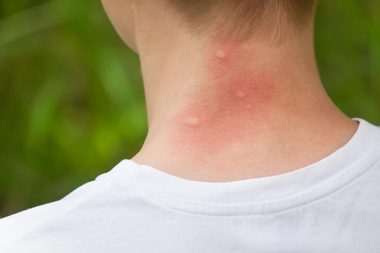
Mosquito bites
You can treat mosquito bites similarly to bee stings, although you won’t have to worry about a stinger left behind (and severe reactions are rare). Check out these surprising home remedies for mosquito bites.
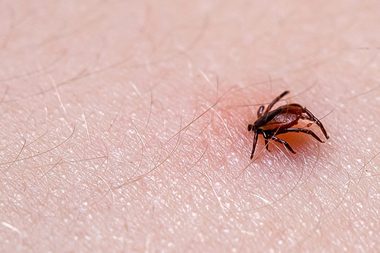
Tick bites
Ticks spread Lyme disease and other nasty illnesses, and they’re sneaky. “Most people that get Lyme disease don’t remember getting bitten by a tick,” says Curtis. Some ticks leave behind a tell-tale rash, but many don’t. Take three steps to fight back: First, try to prevent bites by using insect repellent and wearing long pants, secured at the ankle, if you’re spending time in wooded areas or places with tall grass. Second, check your skin (and your children’s) carefully for ticks after you’ve been outside. If you find one, follow this guide to remove the tick safely. Bottom line: Lift it off gently if it’s not embedded. If it has started to burrow into the skin, use tweezers to grab the head and pull outward (without twisting). Your third line of defense is suspicion. If you live in or visit an area where ticks are prevalent, be vigilant, says Curtis. If you develop a fever or upset stomach, talk to your health-care provider about whether you should take antibiotics to prevent or treat a tick-borne illness. These are the things ticks won’t tell you!
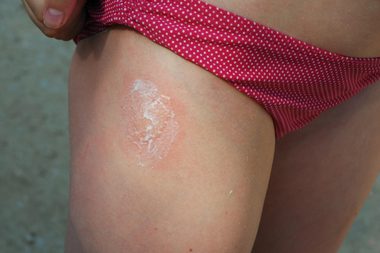
Jellyfish stings
A painful sting can cast a dark cloud over your sunny day at the beach very quickly. To get relief, you’ll need to remove the tentacles. Rinse with seawater and gently scrape with a credit card or flick off with a cloth. Avoid rubbing the affected area with a towel, as you may force the stingers into the skin. For some types of jellyfish, rinsing with vinegar can help. But that story you’ve heard about urinating on a jellyfish sting to soothe it? A myth, so don’t do it. However, immersing the area in warm water (after stingers are removed) can offer some comfort. So can oral or topical pain relievers, such as lidocaine cream.
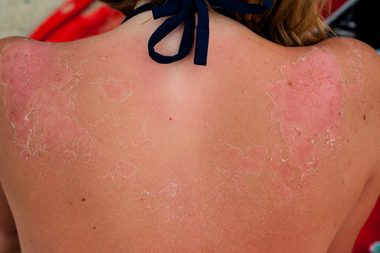
Sunburn
You know all about the importance of sun protection, but if you slip up and get a burn, it can be quite uncomfortable. Cool compresses or a bath can help, as can oral pain relievers and medicated lotions (talk to a doctor about whether to give them to kids, and how much). Drink plenty of water to rehydrate the skin, be sure to stay out of the sun until the burn heals, and try one of more unusual sunburn remedies that actually work. These are the healthy ways to prepare your body for summer.
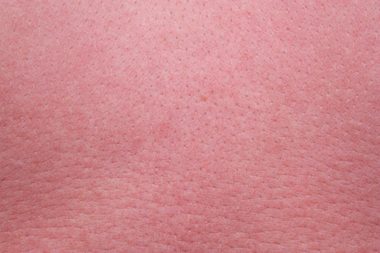
Heat rash
Also called “prickly heat,” this condition can develop in hot and humid weather, usually on areas of the body covered by clothing. Sweat ducts become blocked and swollen, causing small, red, itchy bumps to appear on the skin. Aside from preventing the rash by keeping cool, there isn’t a lot you can do to treat it. Try to get to a cool area out of the sun, drink plenty of water, and give it time. If the rash becomes painful, contact your doctor; it could be infected.

Heat illness and dehydration
Far more serious than prickly heat is dehydration, which can lead to heat illness and stroke. After prolonged exposure to high temperatures, the body’s ability to cool itself may shut down. If untreated, this hyperthermia can lead to organ failure and even death. Symptoms of heat stroke include weakness, headaches, dizziness, and sometimes even a loss of consciousness. Start by getting the victim to a cool, shady area and have her drink water if she can. Cool the outside of her body with cold water, cool cloths (you can even use a T-shirt), and ice. If she doesn’t respond quickly, call for medical help. “In the summer, you really need to hydrate,” says physician assistant L. Gail Curtis. “Just like you need to apply sunscreen before you go out in the sun, you should drink water before you go outdoors or exercise in hot weather.” This is the difference between heat exhaustion and heat stroke.

Swimmer’s ear
If your child’s ears get red or itchy after he swims, the diagnosis could be swimmer’s ear. It’s caused by bacteria or fungus getting inside the ear while he’s underwater. If you’ve found he’s prone to these bugs, have him wear earplugs while swimming. You can also make a mixture of equal parts alcohol and white vinegar. Before and after swimming, put two drops in the ear, then let them drain out. If these preventive measures fail, try over-the-counter ear drops and make swimming and earbuds off-limits until the ear heals. If the OTC meds and these home remedies for ear infections don’t do the trick within a day or so, call your doctor.
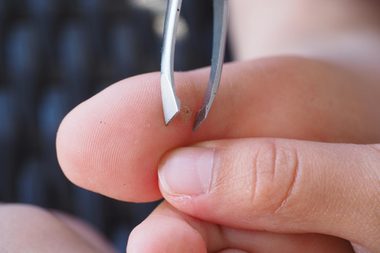
Splinters
Whether you’re camping, gardening, or just going barefoot in the summertime, splinters are a risk. If enough of the splinter is exposed and you can grip the end of it with tweezers, it’s usually safe to remove on your own. Clean the area before and after tweezing, and make sure your tweezers are clean too. Don’t dig around under your skin with a needle, though. If the splinter is small, let it work itself out on its own. For a larger splinter, or one that shows any sign of infection (redness, swelling, warm to the touch), contact a medical professional for help.
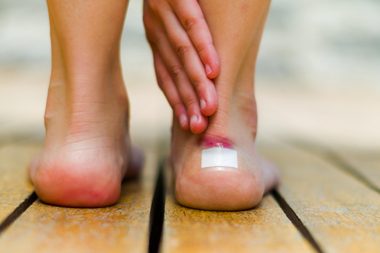
Blisters
It’s oh-so-tempting, but try not to pop a blister. The skin over the blister is a protective barrier that’s keeping dirt and germs out. Break it, and you increase the risk of infection. Instead, keep the blister covered with an adhesive bandage. If the blister is so painful that you can’t walk or use your hand, check with a doctor. In some cases it may be okay to drain the blister. Clean the area first and use a needle sterilized with rubbing alcohol. Poke a few holes near the edge of the blister to allow the fluid to drain. Then cover the area with petroleum jelly and gauze. Don’t miss these life hacks that will make your summer breezier.

Food-borne illness
It’s not just mayo-based potato salads: Almost any food can become contaminated with bacteria, and this happens more frequently in the summer when we’re cooking and eating outside. Plus, warm temperatures are ideal for bacteria growth. Start by avoiding these foods that can cause food poisoning. If you still get hit with a tummy bug, treat with water (try to stay hydrated!), rest, and patience. And as with any of these summer aches and icks, use common sense. If your condition worsens, or fails to improve with these basic treatments, call a doctor. Next, check out these summer health dangers you are probably ignoring.